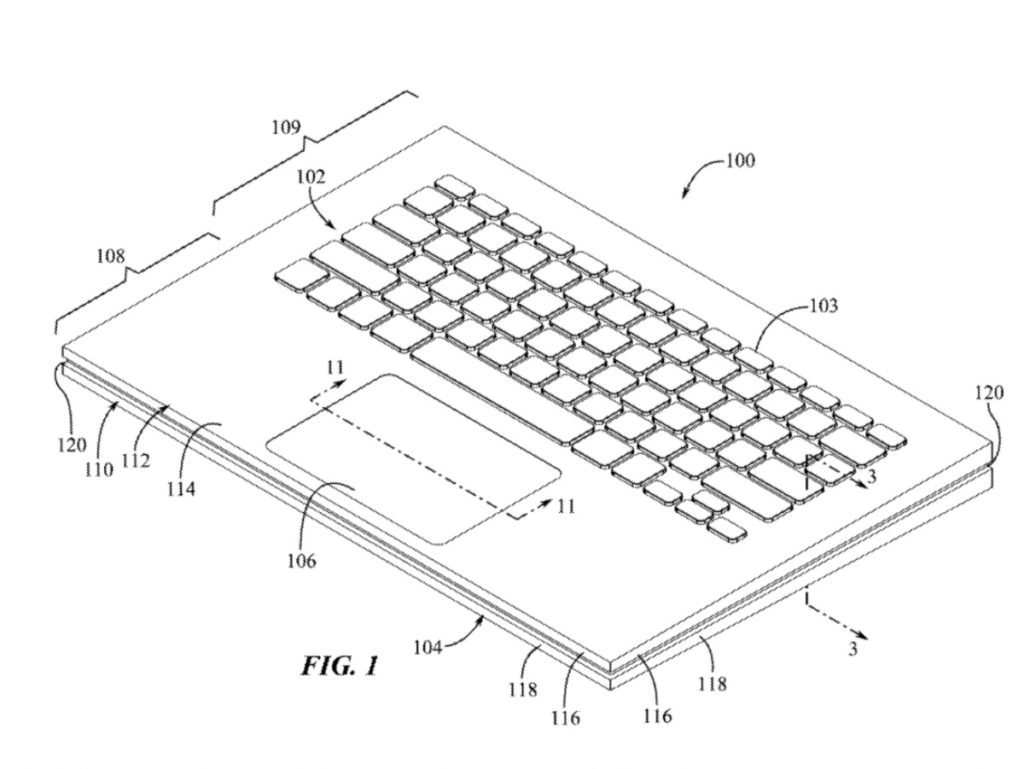Apple has been granted a patent (number US 11817275 B2) for a “Membrane Sealed Keyboard” that shows it wants to make the keyboards of its various devices more resistant to dust and moisture.
About the patent
The patent relates generally to keyboards and input devices for computers and other electric devices. More particularly, it involves flexible structures used in keyboards.
Obviously,keyboards typically have a number of moving keys. Liquid ingress around the keys and into the keyboard can damage internal electronics. Residues from such liquids, such as sugar, may corrode or block electrical contacts, prevent key movement by bonding moving parts, and so on. Solid contaminants (such as dust, dirt, food crumbs, and the like) may lodge under keys, block electrical contacts, and obstruct key movement. These devices can also be undesirably expensive to make and assemble.
The keys on a conventional keyboard are spaced apart to provide key definition. Key definition is a property of a keyboard that describes how easily a user can tell where a key is located by sight or touch. Typically, strong key definition correlates with large gaps or grooves between the keycaps since those gaps or grooves help orient the user’s fingers on the keyboard.
However, spacing apart the keys produces gaps through which liquid and particles can pass into the keyboard. Additionally, due to manufacturing tolerances, keycaps can be slightly misaligned when they each are supported by separate switches, domes and related key mechanisms, thereby leading to an imprecise and noisy visual appearance.
Apple says there are obviously challenges and areas for improvements in input devices such as keyboards. Its patent involves such potential improvements.
Summary of the patent
Here’s Apple’s abstract of the patent: “Keyboards and other input devices are provided with at least one flexible layer that extends over or under the keycaps. The flexible layer spans interkey spaces and lies between inner and outer keycaps. The flexible layer prevents intrusion of invasive material to the keyboard mechanisms and simplifies the appearance of the keyboard area.
“Some flexible layers help align keycaps by connecting inner and outer keycaps or by providing a mechanical connection interface for the keycaps. Some membranes used in the flexible layer have a layered or composite construction that increases durability and tear resistance by attaching or infusing a mesh material or other tough material to a less durable, elastic material.”
Article provided with permission from AppleWorld.Today

